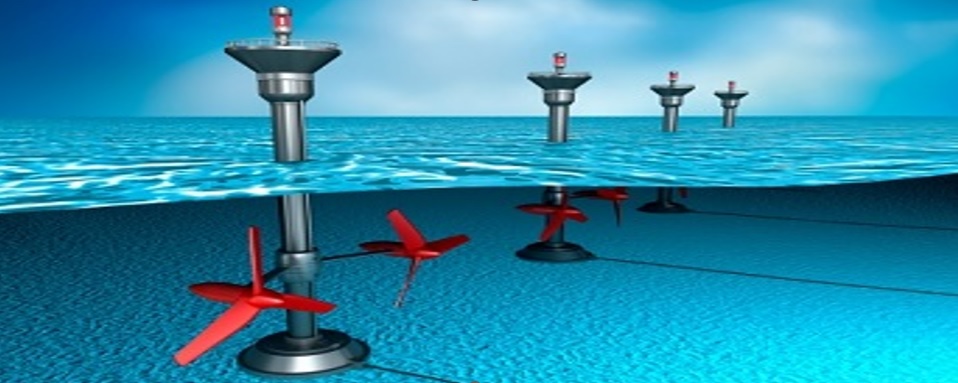Table of Contents
- Introduction
- The ocean as an inexhaustible source of wave energy
- The worldwide renaissance: Leading countries in implementation
- Future prospects: The role of wave energy in the global energy transition
- Challenges and barriers to the development of wave energy
- Innovation and technological advances
- Opportunities for companies and professionals in the energy sector
- Conclusions
- References
Introduction
Wave energy is the form of energy obtained from the movement of waves and tides. Unlike fossil fuels, this energy source is inexhaustible and does not produce greenhouse gas emissions. Its potential is amazing and it has the power to transform the way we generate electricity in a sustainable way.
In a world constantly searching for environmentally friendly and sustainable energy sources, the ocean emerges as a vast unexplored treasure. Beneath the waves lies a powerful and promising source of energy: wave energy.
In this article, we’ll explore the global energy renaissance brewing under the sea and discover how this revolutionary technology is sparking interest and excitement among energy professionals, students, entrepreneurs, and businesses alike.
In recent years, there has been an accelerated growth in the implementation of wave technologies around the world. Leading countries in the energy industry, such as the United Kingdom, Portugal and Australia, have strongly invested in the development of wave farms and pilot projects, obtaining encouraging results. These advances have generated renewed enthusiasm in the energy sector and have aroused the interest of students, entrepreneurs and companies in search of clean and profitable alternatives.
Although there are still technological challenges, associated costs and regulatory barriers, this energy offers a range of opportunities for professionals in the energy sector as well as for entrepreneurs and companies. Job creation, economic development and training in wave technologies are just some of the advantages that this source of energy brings.
In this context, a general exposition of how wave energy is generated is presented, what are its advantages and benefits; as well as the most outstanding projects worldwide. As well as the challenges facing its development and the technological advances that are unlocking its true potential.
The ocean as an inexhaustible source of wave energy
Wave energy: what is it and how is it generated?
It is one that is obtained from the movement of waves and tides. Using special devices, such as floating buoys or submerged structures, the kinetic energy of the waves is captured and converted into electrical energy. This process is highly efficient and it is estimated that only 0.2% of the energy contained in the waves could satisfy the world energy demand.

Advantages and benefits
It offers a series of advantages and benefits that make it a highly attractive energy source:
- Renewability: Unlike fossil fuels, waves and tides are natural phenomena that are constantly renewed, ensuring an inexhaustible supply of energy.
- Low carbon emissions: The generation of this type of energy does not produce greenhouse gas emissions, which contributes to the mitigation of climate change.
- Taking advantage of underused spaces: Wave devices can be installed in coastal or marine areas without significantly interfering with other human activities, taking advantage of underused spaces.
The worldwide renaissance: Leading countries in implementation
Various countries have led the way in the implementation of this energy, demonstrating their commitment to renewable energy:
- UK – Has invested significantly in wave projects, such as the Wave Hub in Cornwall , which has been key to development and research in this area.
- Portugal: The Lusitanian country has been a pioneer in the implementation of wave parks, such as the Aguçadoura Wave Park, which has demonstrated the feasibility and potential of this technology.
- Australia: The Australian coast offers favorable conditions for wave power generation, and projects like the Carnegie Wave Energy Demonstration in Perth have made significant progress.
Outstanding projects: Examples of success in the use of wave energy
- EMEC: The European Marine Energy Center (EMEC) in Scotland is a test and demonstration center that has hosted numerous wave energy projects, such as Aquamarine Power’s Oyster Wave Energy Converter, which has achieved promising results.
- Pelamis Wave Energy: Scottish company Pelamis Wave Power has developed snake-shaped wave devices, which have been successfully tested in various locations, including Portugal and Scotland.
Future prospects: The role of wave energy in the global energy transition
The experts in alternative energy highlight the potential of this energy to play a key role in the transition towards a more sustainable global energy system. Some future prospects include:
- Exponential Growth: Installed power generation capacity is expected to experience significant growth in the coming years as technology improves and costs decline.
- Integration with other renewable sources: Wave energy can be complemented with other renewable sources, such as solar and wind energy, to achieve more stable and reliable energy systems.
- Development of new technologies : Innovation in wave devices continues, with approaches ranging from floating buoys to submerged systems. These technological advances improve efficiency and reduce production costs.
Challenges and barriers to the development of wave energy
- Technology and Associated Costs : While wave technology has advanced significantly, there are still technical challenges that need to be overcome. The resistance and durability of the devices against extreme marine conditions are key aspects to address. In addition, high investment and maintenance costs continue to be a barrier to the widespread adoption of energy.
- Environmental impact and risk mitigation : It is important to assess and mitigate the environmental impact of wave projects. Comprehensive studies must be carried out to understand the possible effects on marine ecosystems and take appropriate mitigation measures. Collaboration between industry, scientists and regulatory authorities is essential to ensure a sustainable development of this technology.
- Regulation and legal framework for wave energy : The establishment of clear and favorable regulatory frameworks is essential to encourage investment and development of this energy. Governments must establish adequate policies and incentives that boost the growth of this emerging industry and promote legal certainty for investors.
Innovation and technological advances
- New technologies and designs of wave devices
Research and development continues to lead to advances in the design and efficiency of wave devices. From floating buoys to flexible membrane systems, various solutions are being explored to more effectively capture and convert wave energy.
- Investigation and development
Research centers and universities around the world are carrying out research projects in wave energy. These efforts are aimed at improving understanding of ocean phenomena, developing more accurate wave prediction models, and refining power generation devices and systems.
Opportunities for companies and professionals in the energy sector
- Job creation and economic development
The growth of the wave industry brings significant opportunities in terms of job creation and economic development. The construction, installation and maintenance of wave farms require specialized labor, which boosts the generation of employment in coastal communities. In addition, the development of this industry promotes investment and economic growth at the local and national level.
- Training and formation.
With the growth of wave energy, the need arises for professionals trained in this area. There are opportunities for training in engineering or marine science specialized in this type of energy. Likewise, training and certification programs can be developed for technicians and workers related to the installation and maintenance of wave devices.
- Entrepreneurship and new business opportunities
The wave industry offers fertile ground for entrepreneurship and innovation. From device design and manufacturing to project development and consulting services, there are multiple opportunities for companies to get involved in this growing industry. Entrepreneurial spirit and business vision can play a critical role in shaping and succeeding in this energy.
Conclusions
As technological advances continue to drive efficiencies and reduce the costs associated with generating this power, this industry is expected to experience significant growth globally. Leading countries such as the UK, Portugal and Australia are showing the way to a wave-powered future.
This energy offers exciting opportunities for professionals in the energy sector, students, entrepreneurs and companies. From job creation and economic development to specialized training and innovative business prospects.
References
Own source
To see more similar articles, check your inspenet page: https://inspenet.com/en/articles/

